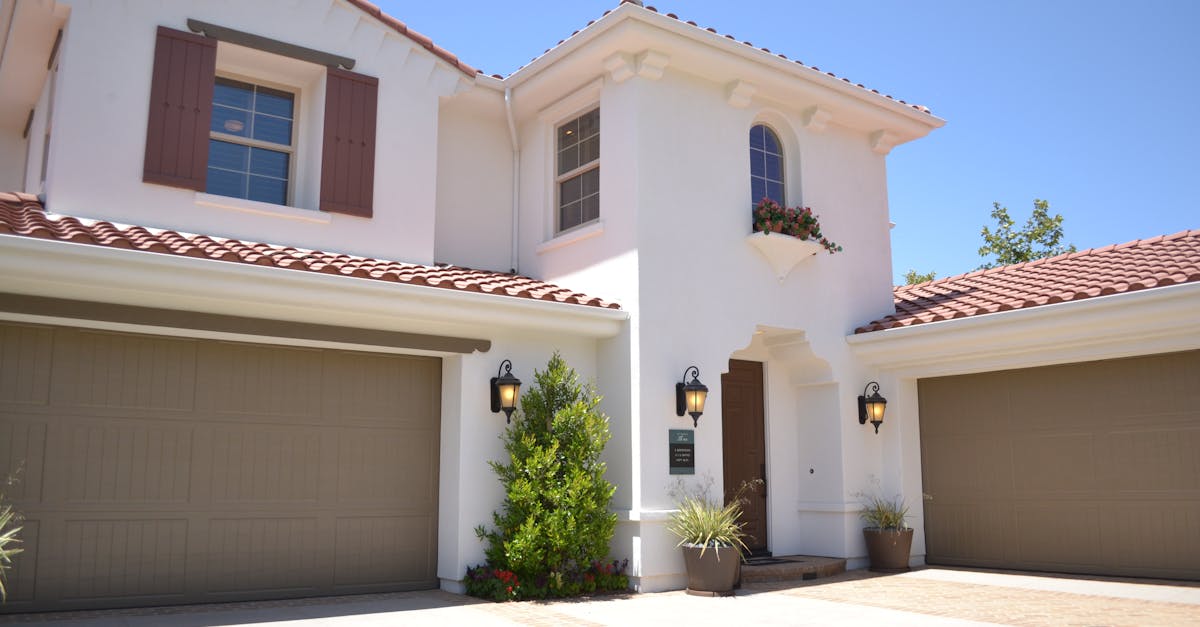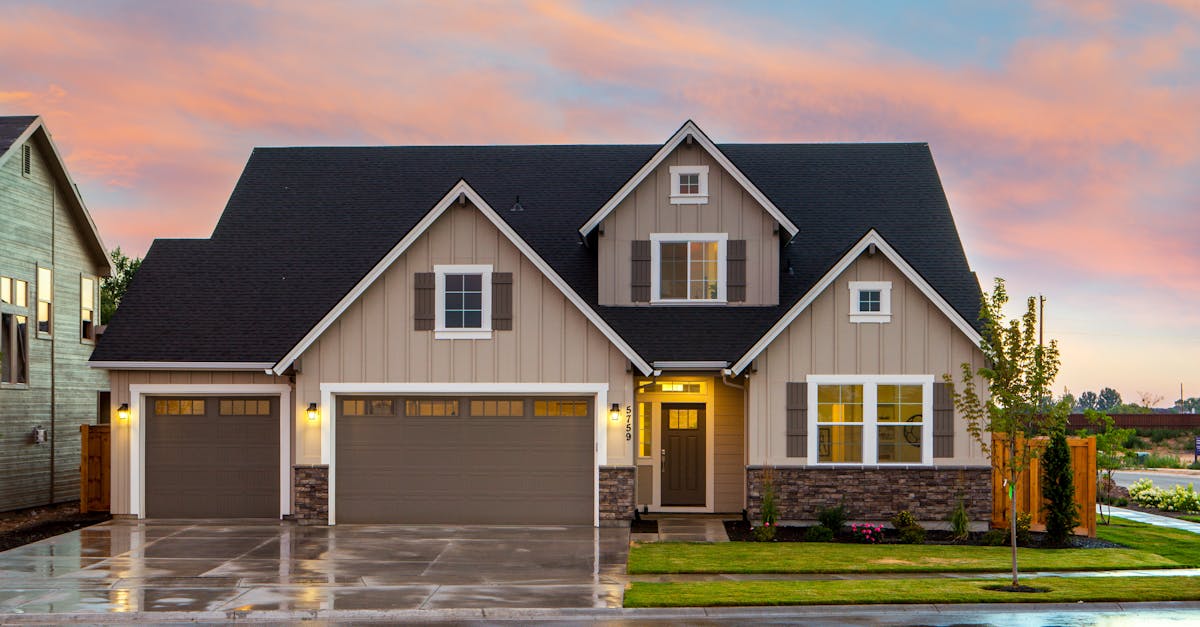
Replacing Garage Door Springs
Replacing garage door springs is a crucial aspect of garage door repair that can significantly impact the functionality and safety of your door. Over time, springs can wear out or break due to regular use, leading to increased strain on the door system. It is essential to choose the correct type of spring for your door, whether it's an extension spring or a torsion spring. Each type has specific installation requirements and handling procedures, which should be carefully followed to ensure the door operates smoothly.
Before starting the replacement process, it is vital to disconnect the power to the garage door opener and secure the door in a closed position. Use the necessary tools such as pliers and wrenches to remove the worn springs. Extreme caution is required due to the potential for injury; springs are under high tension and can cause significant harm if mishandled. If you feel uncertain about the task or lack the experience, consulting a professional for garage door repair is advisable to ensure proper and safe installation.
StepbyStep Guide to Spring Replacement
Replacing garage door springs can be a challenging task. First, ensure you have the right safety equipment on hand, including gloves and safety goggles. Disconnect the garage door opener to prevent accidental activation while you work. Use a winding bar to safely unwind the tension from the old springs, making sure to keep your hands clear of any moving parts. It's essential to understand that springs are under high tension, so handle them with care.
After removing the old springs, install the new ones by following the manufacturer's instructions closely. Attach the new springs to the brackets, ensuring everything is secure and properly aligned. Carefully wind the springs using the winding bar, paying close attention to the tension level to avoid any mishaps. This process is critical for proper garage door repair functionality. Once the installation is complete, reconnect the door opener and test the door to ensure smooth operation.
Fixing Garage Door Openers
Garage door openers can encounter various issues that may prevent them from functioning correctly. Common problems include unresponsive remotes, doors that refuse to close, or unusual noises during operation. Troubleshooting these issues often starts with checking the power supply, ensuring the opener is plugged in, and verifying that the remote batteries are fresh. Sometimes, simply reprogramming the remote or checking the opener's alignment can resolve the problem. For issues that are not easily fixable, homeowners might need to consider various options for garage door repair.
When a garage door opener encounters more complex problems, it might indicate a need for professional intervention. Signs such as persistent grinding noises, doors that open or close intermittently, or the remote not engaging at all could suggest deeper mechanical or electrical issues. Ignoring these symptoms can lead to more significant damage, resulting in more expensive repairs. In such cases, consulting a garage door repair specialist ensures that the issue is diagnosed correctly and fixed by someone with the necessary expertise.
Troubleshooting Common Opener Issues
When your garage door opener fails to operate, it can be frustrating. Start by checking the power source to ensure the opener is plugged in and receiving electricity. A tripped circuit breaker or blown fuse could be the culprit. If the opener lights are not illuminating, replace the bulb as it might be preventing the unit from functioning. Additionally, inspect the remote control batteries, as dead batteries can easily be overlooked during troubleshooting.
If the opener is receiving power yet remains unresponsive, examine the safety sensors located at the base of the garage door tracks. Misaligned or obstructed sensors can impede the opener's function. Cleaning the sensors may resolve the issue. In some cases, reprogramming the remote or resetting the opener could restore operation. If these troubleshooting tips do not work, it may be time to consider professional Garage Door Repair to address more complex problems.
When to Seek Professional Help
Many homeowners are capable of performing basic garage door repairs. However, certain situations require a level of expertise that goes beyond DIY skills. When issues arise that involve electrical components, complex mechanics, or safety concerns, it's important to recognize when to seek professional help. Garage door repair technicians possess the necessary experience and tools to address intricate problems effectively.
Signs that indicate the need for expert assistance include persistent issues, unusual noises, or visible damage to the garage door system. If the door is not responding to the remote or is off its tracks, these problems can pose safety risks. Additionally, if you find yourself frequently adjusting springs or openers without lasting success, it may be time to contact a professional for specialized garage door repair services.
Signs That Indicate Expert Assistance is Needed
Certain signs often indicate that it's time to seek professional assistance for garage door repair. If the door is not functioning properly despite troubleshooting efforts, unusual noises during operation should raise a red flag. These sounds might include grinding, squeaking, or popping, which could signify underlying issues that require specialized knowledge and tools to resolve.
In addition, if the door appears misaligned or has recently suffered damage, it's advisable to consult an expert. An off-track door can pose safety risks and lead to further complications if not addressed promptly. Garage door repair professionals have the experience to diagnose problems accurately and implement lasting solutions.
FAQS
Can I really fix a garage door by myself?
Yes, many garage door issues can be fixed by homeowners, especially with the right tools and knowledge. Simple repairs like replacing springs, fixing openers, and general maintenance can often be handled without professional help.
What tools do I need to replace garage door springs?
To replace garage door springs, you typically need a socket wrench, a winding bar, pliers, safety glasses, and a ladder. It's important to prioritize safety and use the correct tools for the task.
How do I know if my garage door opener is malfunctioning?
Common signs of a malfunctioning garage door opener include the door not responding to the remote, the door moving slowly or erratically, or making unusual noises. Troubleshooting the opener can help identify the issue.
When is it time to call a professional for garage door repairs?
You should consider seeking professional help if you encounter complex issues, such as broken cables, misaligned tracks, or if you feel uncomfortable performing repairs yourself. Safety should always be a priority.
Are there any safety precautions I should take when fixing my garage door?
Yes, always disconnect the power to the opener before starting any repairs, wear safety glasses, and avoid working alone if possible. Additionally, be cautious around springs and cables, as they can be dangerous if mishandled.

